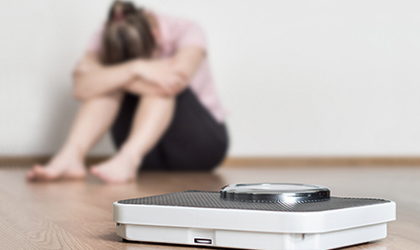
Despite the perks – a better work-life balance, less time spent commuting and reduced stress – WFH (working from home) presents its own set of unique challenges. For starters, some WFH setups might not be great for your posture. Sitting on sofas, beds and folding chairs for months on end is a recipe for crippling pain that no amount of working in your pyjamas can make up for.
Working from home wellbeing?
All the new factors to consider mean that you need to take the time to adjust to the new working from home lifestyle by listening to your body and taking care of your wellbeing, in a different way. There’s plenty of things you can do to make sure you’re looking after your mind and body from your WFH environment.
Get a keyboard and mouse
Most postural issues rear their ugly head when you spend hours hunching over a laptop. Getting a keyboard and mouse is one of the best (and simplest) additions to improve your WFH set-up. You’ll notice yourself sitting taller almost immediately.
Fashion a laptop stand
Elevating your laptop to eye level is just as vital as investing in a keyboard and mouse. If you’re working on a kitchen or dining room table, consider getting creative with recipe books or chopping boards. You could also work at your kitchen counter or use an ironing board
as a makeshift standing desk.
Talk to HR
Remember, your employer has a duty of care for your health and safety. And that means providing you with the right equipment (think electronic devices, proper tables and the correct ergonomic chair) to ensure you can work happily, healthily and safely. Don’t be afraid to have a chat with your employer if you need additional support with your WFH environment.
Ditch the sofa
Most ergonomic experts agree the sofa is the worst place to set up shop for the working day. Though comfortable, the ‘soft office’ is terrible for your postural alignment. In short, sofas encourage you to slump; they make you round your shoulders and lean your head forward. Plus, the perception of comfort may prevent you from getting
up and moving around.
Move little and often
It can be tempting to be completely sedentary when you’re WFH. But it’s important to move around just as you would in a traditional office. Every half an hour, take a walk around your house, do some squats, or stretch your arms and legs. And every hour, try laying on the ground with your legs at a 90-degree angle to lengthen and open the muscles in your back.
Think about your posture
Modern life doesn’t exactly make it easy for us to maintain good posture. When we’re not doubled over in front of our screens, we’re sitting on commuter trains. And this throws our alignment out of whack. Poor posture is often behind niggling back pain, neck aches, and those general muscle strains that prevent us from feeling the best version of ourselves.
Don’t succumb to slouching
It’s not surprising so many of us slouch. It’s comfy. But it stresses your spine. And that strains your bones, joints and muscles, which hold your backbone in place. To support your posture, pretend you’re standing against a wall: hold your head upright and tuck your chin in. Stand with your knees straight and shoulders back. Try to avoid sticking your hips or bottom out. It should feel as though your head is moving towards the sky.
Improve your texting game
According to the latest figures, people in the UK now check their phones every 12 minutes of the waking day.¹ Every 12 minutes! That’s a lot of time spent tilting your neck. And looking down to check your messages puts a great deal of pressure on your spine. For a healthier alignment, lift your phone up and simply move your eyes, not your head.
Sit up behind the wheel
Reclining behind the wheel may feel comfortable, but it doesn’t do your posture any favours. Make sure your seat is pulled close to the steering wheel when you’re driving. Bend your knees slightly, so they’re around hip level, but take care not to lock your legs.
Sleep smarter
We’d be lying if we said melting into a soft mattress wasn’t appealing. The problem, however, is this surface doesn’t hold your spine’s natural shape. Opting for a firm mattress might be a better choice to support your body. If you’re a side sleeper, bend your knees (think foetal position, but not fully tucked). And, of course, don’t forget to place a pillow under your head to align your spine, and/or a pillow between your knees at night to help alleviate back problems.
Feed your flexibility
Besides movement, making changes to your diet is one of the best ways to lengthen, open, and expand your body. Although no one food can magically make you touch your toes, certain dietary changes will complement your flexibility training and help you limber up.
The benefits of squats
Squatting nourishes the ankles, stabilises the knees and mobilises the hips. It helps the muscles and tendons within the locomotive system open up and understand their role. As a result, we improve our posture, minimize the risk of injury, and enable our bodies to operate more efficiently. If we want to be well, we need to get low.
Large swathes of the planet still squat – whether to pray, cook, eat and even give birth. But Western countries have abandoned this posture. Children naturally have a perfect, fluid squat. But they soon unlearn this position, sitting at desks, hunching over books and reclining in chairs. As we get older, we lose our natural ability to squat.
How to squat
To model perfect squat behaviour, start squatting with your heel up. You could even place a book underneath your heel. Over time, your heel should reach ground level. Ultimately, you want to see squatting as a comfortable rest position, not an exercise.
WFH squats
Take every opportunity to squat to prevent being sedentary throughout the day and to practice improving your squat technique. Start the day with a few squats, squat while you’re waiting for the kettle to boil, or squat while you’re watching TV. To increase flexibility and mobility whilst being working from home, every 25 minutes do 3-4 squats at your desk. This will help to break up a day of sitting or being desk-bound.
Want to find out more?
Read more about yoga for flexibility.
References:
-
A decade of digital dependency. (2021). Available online: https://www.ofcom.org.uk/about-ofcom/latest/media/media-releases/2018/decade-of-digital-dependency
You Might Also Like

Olivia
Olivia Salter has always been an avid health nut. After graduating from the University of Bristol, she began working for a nutritional consultancy where she discovered her passion for all things wellness-related. There, she executed much of the company’s content marketing strategy and found her niche in health writing, publishing articles in Women’s Health, Mind Body Green, Thrive and Psychologies.
View More



